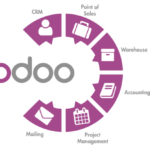
Normalization is a key technique in database design, especially for Online Transactional Processing (OLTP) systems. It focuses on breaking down large, redundant tables into smaller, well-structured tables to enhance data integrity, minimize redundancy, and ensure consistency. In this blog, we’ll explore normalization levels, their importance, and practical examples to understand why normalization is essential for efficient database management.
What is Normalization?
Normalization organizes database tables to eliminate redundancy and ensure data consistency. By adhering to a set of rules, it creates relationships between data while maintaining a structured format. This is particularly beneficial for OLTP systems, which require fast and reliable data transactions.
Levels of Normalization
1. First Normal Form (1NF):
Criteria:
- Each cell must hold a single, atomic value.
- Rows must be unique, identified by a primary key.
- No duplicate rows or columns.
2. Second Normal Form (2NF):
Criteria:
- The table must be in 1NF.
- Non-primary key attributes must depend entirely on the primary key.
3. Third Normal Form (3NF):
Criteria:
- The table must be in 2NF.
- No transitive dependencies (non-primary key attributes depend only on the primary key, not on other non-primary attributes).
Why Normalize?
Example: Product Table Before Normalization
| Product ID | Product Name | Category | Department |
|---|---|---|---|
| 101 | Laptop | Electronics | IT |
| 102 | Mouse | Accessories | IT |
| 103 | Jacket | Clothing | Apparel |
Issues with this structure:
- Redundancy: The
CategoryandDepartmentfields repeat across rows. - Inconsistency Risk: Updates require changes in multiple rows, increasing the likelihood of errors.
- Storage Overhead: Repeated data consumes unnecessary storage space.
Normalized Tables
1. Product Table:
| Product ID | Product Name | Category ID |
|---|---|---|
| 101 | Laptop | 1 |
| 102 | Mouse | 2 |
| 103 | Jacket | 3 |
2. Category Table:
| Category ID | Category Name |
|---|---|
| 1 | Electronics |
| 2 | Accessories |
| 3 | Clothing |
3. Department Table:
| Department Name | Category ID |
|---|---|
| IT | 1 |
| IT | 2 |
| Apparel | 3 |
Benefits of Normalization
- Reduces Redundancy:
- No repeated data across rows or columns.
- Simplifies Updates:
- Data changes are made in one place, reducing error risk.
- Optimizes Storage:
- Eliminates unnecessary duplication, saving storage costs.
Drawbacks of Data Redundancy
- Increased Storage Costs: Repeated data takes up more space.
- Complex Updates: Changes across multiple rows lead to inconsistencies.
- Reduced Efficiency: Redundant data can slow down operations in OLTP systems.
Normalization is vital for designing effective OLTP systems, ensuring databases remain efficient, consistent, and manageable. By splitting larger tables into smaller, interconnected ones, normalization reduces redundancy and optimizes storage. While it requires careful planning, the long-term benefits of a normalized database far outweigh the initial effort.


